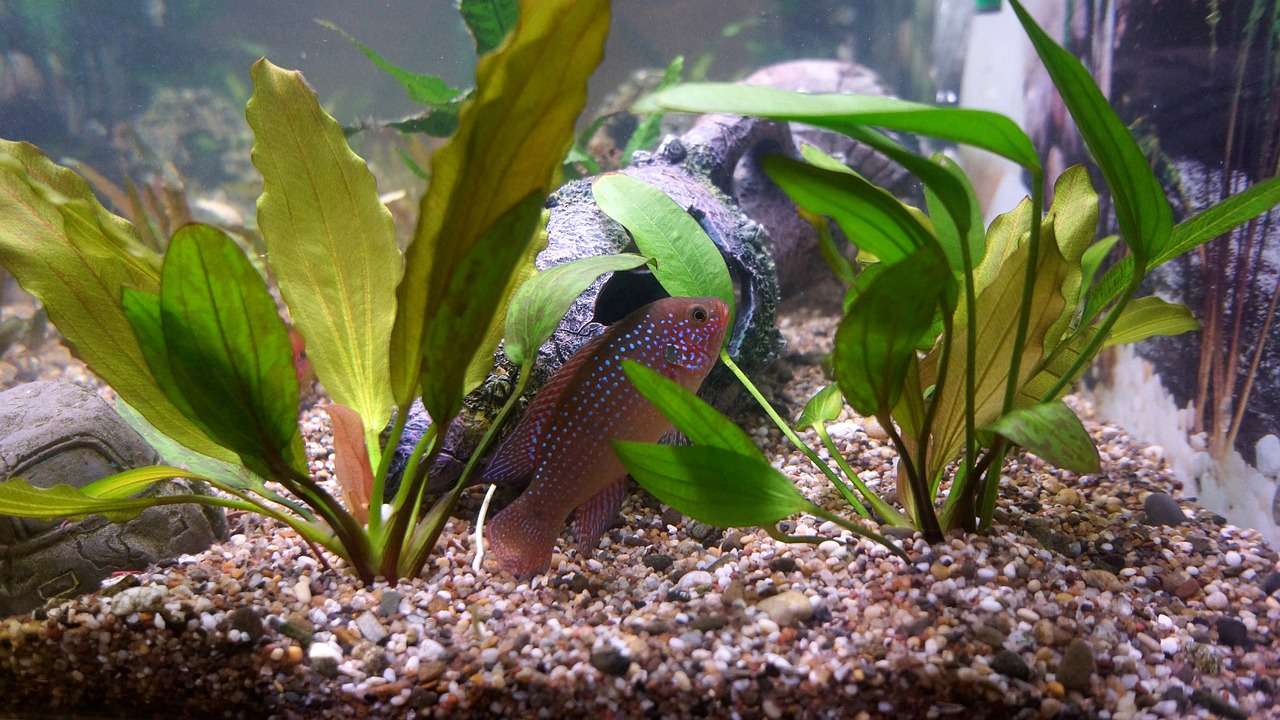Select aquarium plants are still sought after by enthusiasts as additions to their favorite underwater gardens, and one of the most effective ways to decorate the tanks is through the planting of aquarium bulbs. You will learn how to plant aquarium bulbs and turn your fish tank into a lush, healthy environment that will be beautiful and helpful for your pet fish.

Choosing the Best Aquarium Bulbs
Initially, one needs to select the proper sort of aquarium bulbs, which will be discussed before explaining the planting process. Here are some factors to consider:
- Tank size and conditions
- Lighting requirements
- This should be compatible with the existing flora and fauna of the same area; this would ensure that it blends well with the natural environment.
- Growth rate (above is the relative growth rate in comparisons) and mature size
The Best Aquarium Plant Bulbs
Regarding planting aquarium bulbs, it is vital to understand that the kind of bulbs to be planted is a paramount factor in achieving an effective result. Here are some popular and easy-to-grow aquarium plant bulbs:
- Aponogeton: These fast-growing plants form long, ribbon-like leaves and flowers that smell sweet.
- Dwarf Lily: Dwarf aquarium lily are famous for their red or green leaves, which enhance the beauty of any tank and are thus ideal for hobbyists to include in the tank.
- Tiger Lotus: Through the coloration of their leaves and having leaves with different colors, tiger lotuses give your aquarium a unique feel.
- Crinum: These plants have elongated, ribbon-like foliage and grow fairly well, so they are best suited to larger enclosures.
- Nymphaea are also called water lilies and release round, floating plates and flowers of many colors.
By learning these varieties, one is on the right track toward learning how to plant aquarium bulbs correctly.
Bulb planting involves including rooted bulbs by planting them directly in the aquarium substrate, so let’s discuss how to prepare our aquarium for bulb planting.
However, you have to follow these procedures when planting aquarium bulbs, and this is before you do anything else. Follow these steps:
- Clean your tank thoroughly.
- Monitor the inhabitants, the water temperature, pH, hardness, and any other changes that may take place.
- See to it that there are adequate light sources.
- Prepare the substrate.

The Planting Process:
As much as you may want to, it is not recommended to plant aquarium bulbs in the traditional sense, let alone in the sand.
If you have decided on your bulbs and set up your aquarium, it is time to find out details on planting them.
- Soak the bulbs: Before planting, immerse them in DE chlorinated water for 24-48 hours. This will help them rehydrate and spur growth.
- Choose the right location: Consider the flowering size of the plant, and plant the bulb at the specified size. Make sure it will have room to expand and receive the appropriate amount of light.
- Plant the bulb: This should be done by applying a slight pressure to the bulb to ensure it is buried in the substrate, but about one-third of the bulb should be visible. This enables it to elongate out of the ground and grow to a certain height while developing roots.
- Secure the bulb: If required, plant weights or aquarium-safe rocks can anchor the bulb until it can root itself.
- Maintain proper water conditions: After planting, stabilize the water conditions and notice that water is circulated properly for healthy plant growth.
Knowledge of such steps is important when choosing the appropriate method to learn how to plant aquarium bulbs appropriately.
How Long Does It Take For The Bulbs To Grow?
Some frequently asked questions when identifying the most appropriate approach to plant aquarium bulbs are those concerning the growth cycle. The growth rate of aquarium plant bulbs can vary depending on several factors, including:
- Plant species
- Water conditions
- Lighting
- Nutrients available
There are some general rules prescribing a successful growth rate: on average, it is possible to note some increase in 1-3 weeks after seeds are sown. But, typically, 2-3 months can pass before plants reach their full mature size. Some species may grow very fast and, therefore, have grown for a week and be several inches larger, while others, like Crinum, might take several weeks to grow for at least an inch or two.
Concessions must be made when planting the aquarium bulbs; the most crucial thing is patience. Remember that all plants are unique and have different growth rates, so if you set the right environment, the best outcome will be expected.

How to Grow Aquarium Plant Bulbs:
This paper draws out strategies in the hope of promoting success in the following ways:
- Maintain consistent lighting: Light is another factor; most aquarium plants need light for 8–10 hours of the day. Adhering to a schedule is necessary; thus, a timer can be utilized.
- Provide proper nutrition: You can add liquid fertilizers or root tabs to add other nutrients that float in the water and exist on the substrate.
- Monitor and adjust CO2 levels: Most underwater plants can get extra CO2, which can improve their rates of photosynthesis. One CO2 injection system could be recommended for enhanced growth.
- Perform regular water changes: This clears the compound of excessive nutrients and ensures that water, vital for the plant’s health, is kept clean.
- Trim and prune as needed: Pruning also ensures that the plant becomes bushier and does not congest one another.
- Be patient: Just be advised that how to plant aquarium bulbs is not something that can be done with a snap of a finger—however, only despair if you find the results in the first ten.
Troubleshooting Common Issues
- Bulbs not sprouting: If your bulbs have not sprouted in the last 3–4 weeks, they might be dormant, or, in other words, they are dead. Avoid tightly rotating the bulb; instead, apply gentle pressure to it. If it is squishy or pulpy, it is probably rotten and must be removed.
- Slow growth: This could be due to a lack of light or nutrients reaching the plant, or it may just be the plant being lazy. To cut a long story short, this is the reason. Check your tanks and their conditions, and change them if necessary.
- Yellowing leaves: This can only mean that the body needs a certain nutrient or nutrient combination. Consider incorporating a tall liquid fertilizer containing nitrogen, potassium, and phosphate into your tank.
- Algae growth: This is when there are high nutrient concentrations and the light intensity increases, which results in algae issues. Algae eating, infrequent feeding, more water changes, and modifying the light as needed are solutions.
- Floating bulbs: Some require the bulb to float at first. You can bury them with plant weights or let them float when they produce roots and sink to the bottom.
It is also vital to understand these general problems and how to solve them if one is to master planting aquarium bulbs.
Conclusion
Understanding how to plant aquarium bulbs is a good start toward having a beautiful underwater garden in the fish tank. This writing has offered you a detailed procedure for buying aquarium plant bulbs, a growth timeline, and common problems you may encounter. However, giving appropriate care and attention to your aquatic garden will enhance the beauty of your aquatic pet’s home. So why wait? Begin your experience with the universe of aquarium plant bulbs now and see the transformation of your underwater haven as soon as possible.
Related articles:


